Mon-Sat: 8:00 to 20:00
Get Personalized, Accessible, and Patient-centered Care
Our clinicians go the extra mile to relieve your symptoms, restore functionality (at play, work, sports), and enhance your overall quality of life.

About Us
Peslocus Physio Home Services is a team of HCPC registered professionals, providing client-centred home and workplace services. Our services reflect the combined years of experience, expertise, and track record of our practitioners in Physiotherapy and associated disciplines.
All our Physiotherapists (principals and associates) are qualified Chartered Physiotherapists (Members of the Chartered Society of Physiotherapy-MCSP). The Principal Physiotherapists alone have almost a combined experience of four decades and have practiced both within the UK and Ireland’s private and public healthcare systems.
Our vast experience and expertise equip us to provide you, your family, employees, businesses, and organizations an accessible, first-class service right in your own homes or business locations at a time well suited to your lifestyle and schedule.
We work closely with GPs, NHS, and Private Hospitals and their Consultants.

Our Services
Our Community Physiotherapy services cover the following areas:
- Musculoskeletal problems (necks, back, joints, etc);
- Sports and soft tissue injuries (strain, sprains, etc);
- Pregnancy-Related Back Problems and Women’s Health Issues;
- Orthopaedic/Bone Conditions: Osteoporosis (Brittle bones); After Fracture Care; Arthritis; Etc.
- Care of the elderly and deconditioned Patients;
- Rheumatological Conditions;
- Poor Mobility and Balance assessments;
- Falls Assessment and Prevention;
- Hands Therapy;
- Pre- and Post-Operative Physiotherapy for Back Surgery, Ligament Repair, Joints Replacement, Etc
- Musculoskeletal Physiotherapy for children and Young People (Slipped Upper Femoral Epiphysis-SUFE, Perthes, Sever’s, Back pain, Osgood Schlatter Syndrome, Knee Pain, Etc)
- Neuro-Developmental Physiotherapy for Children (Cerebral Palsy, Sensory Processing Disorder, ADHD, Autism, Etc);
- Biomechanics/Gait/Postural assessment/Orthotic assessment and fitting;
- Health promotion and Wellness (including Workplace injury prevention/management), Return to work and vocational rehabilitation (using work place assessment, job retention strategies & interventions as well as managing cases that require such by collaborating with all involved stakeholders);
- Nursing and Care Homes Visits;
- Neurological Problems (Multiple sclerosis, stroke, Parkinson’s Disease, Etc), Equipment assessment and advice
- Provision of Assistive Devices and Aids;
- Speech and Occupational Therapy Assessments and Treatment;
- Men’s and Women’s Health;
- Ergonomic Assessment
- Foot Deformities
- Orthotic and Medical Footwear
- Injury Rehabilitation
- Taping
- Medico-Legal Reporting
- Ancillary Services
- Exercise Therapy and Conditioning Program
PPN Checker
How would I know if I am likely to benefit from your services?
- I want quicker and more regular treatments for my problems that would increase my chances of recovery.
- I have been waiting for a physiotherapy appointment for some problems or injury
- I am a Care Home Owner or Operator or have a family member in a Nursing or Care Home who could do with some help in improving their function and activity level
- I am housebound with reduced mobility and a high risk of falls?
- I am at risk of a fall due to my poor balance, foot problems, joint pain, and other ailments?
- I have been at a healthcare facility for my problems but could do with some additional treatments and advice
- I am an elderly patient (or have an elderly relative or neighbor) who is going off his or her feet
- I am preparing for an operation and would like some pre-operative assessment, treatment, and advice to boost my post-operative recovery
- I have just had an operation and would like to boost my return to function and pre-operative level
- I have a longstanding physical problem previously treated but still recurring
- I want a Therapist who would work in Partnership with me to not only alleviate my problems but also address the likely causes.
- I plan to set up home or workplace Wellness, Treatment, and Maintenance programs for myself (at home) or employees (workplace) to promote health and wellbeing
- I do not want my new and/or ongoing problem(s) to be a longstanding (chronic) issue
- I have been to loads of ‘experts’ and ‘specialists’ and my problems appear not to be improving
- I have a child with longstanding muscle/joints/leg pain and have been told it is due to ‘growing pain’
- I am an instructor or Teacher who runs GROUP (Pilate, Yoga, Dance, Fitness, fun groups, etc.) programs for people. Some members have been complaining of pain, experiencing some joint problems, and dropping out of the group.
- I would like to improve my employees/workplace productivity and make it a fun place to work
- I would like to adapt my home, workplace, lifestyle, and Activities of Daily Living (ADL) to suit my changed/changing functions.
- I would like to have all my Healthcare Professionals discussing my healthcare needs under one roof (my roof) all at the same time!
- I am still not sure yet if my needs will be met or if my problems are mentioned here, then speak to us. You’ll thank us for it.
Our Guarantee
We take pride in our commitment to delivering:
- – Comprehensive and effective services that prioritize care.
- – Patient-centered and easily accessible healthcare.
- – High-quality, multidisciplinary approaches to healthcare.
- – Prompt and efficient delivery with excellence at the forefront.
Testimonials
J .Corcoran
“I am happy to recommend Oladimeji, I have always found him to be professional and caring, taking the time to know his patients and ensuring that they received the best possible care”
Brain Walsh
“I was a patient of Oladimeji Oyeleye for a period of 4 years, from 2012 – 2016. During this time, I attended Oladimeji’s walk in clinic for physiotherapy, bio-mechanical assessment and for the fitting of orthotic insoles. I also availed of his home visit service.
I have always found Oladimeji to be an extremely knowledgeable and dedicated professional, who places a particular emphasis on patient service. He offers very flexible appointments and I have always found him to be readily contactable for follow up queries.
M. Johnson
“I injured my back at the gym in February and was recommended to Dimeji who is the principal practitioner. He diagnosed the problem swiftly and got my back fixed. Now I am back in the gym again 🙂 I highly recommend their service which was brilliant from the first call to the last session.”
Eileen
“I attended Oladimeji for a couple of years for numerous ailments. I found him to be very competent at his job. He was patient and caring and was always in good humour”
Our Expertise
We address the following conditions and problems:
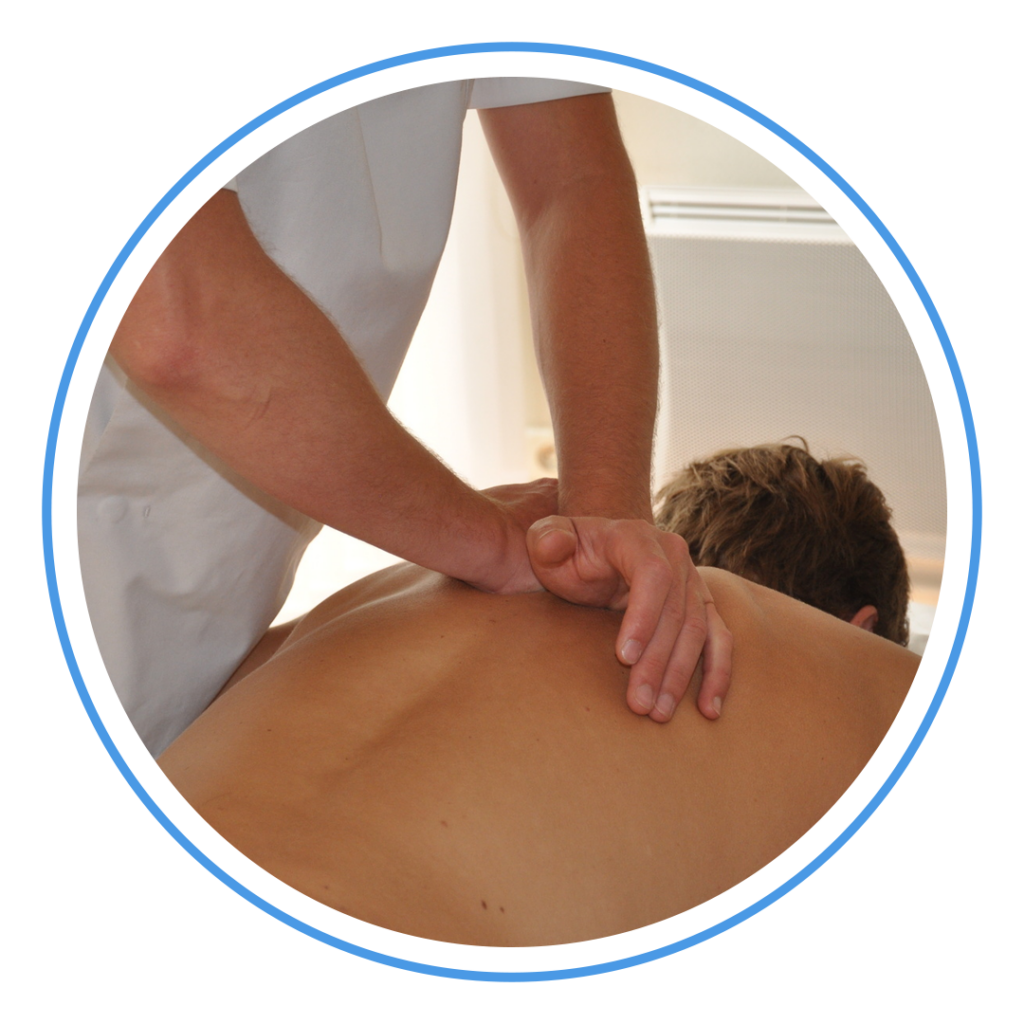
This happens in rear-end car collision when the head is violently snapped backward and forward. The muscles, ligaments and other facets joints of the spine can be affected. The severity of injury depends on the speed at the point of impact.
Sizeable percentage of the population will develop back pain in their lifetime. The cost of low back pain to the sufferer is unquantifiable; to the employer or self-employed, there is loss of productive days as a result of sick days, with some patients developing other condition if it gets chronic. Nobody is immune to back pain. Back pain occurs with increasing age, and more common in those who are less active and less fit. Another factor is cigarette smoking, etc. Other risk factors are:
- Occupational Risk factor
- Race
- Hereditary
- Diet
- Medical History
Low back pain can occur with other conditions in men and women. Such diseases are scoliosis, kidney infection, endometriosis, infections, pregnancy, etc. Low back problems with the associated problems are preventable and treatable.
Manual therapy involves provision of soft tissue massage for tight and unresponsive muscles. It also includes gentle movement manoeuvres with mobilisation techniques for stiff facet joints (spine) and peripheral joints (knees, hip, ankle, foot, and elbow).
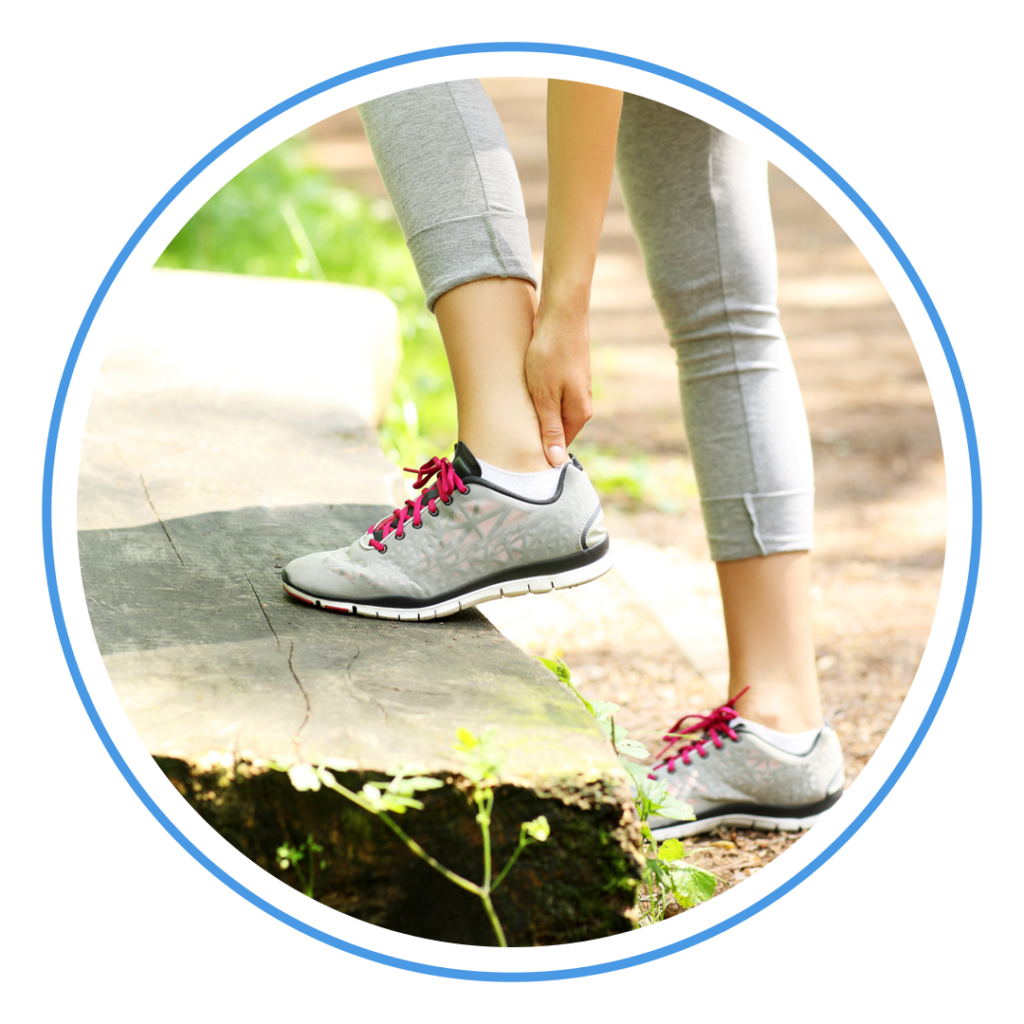
Sport Injuries constitute a major part of our lives as we get more active. This is a broad term commonly used to include injuries occurring during sports or play. Some of these injuries are caused by poor or lack of warm ups before exercise, poor and/or improper exercise gear or surfaces, muscle inflexibility due to poor stretches. Sport Injuries affect the musculoskeletal systems: bones, muscles, tendon, ligaments, and associated soft tissues, and are often classified as acute or chronic. Examples are the sprains and strains, bruises, joint injuries, shin splints, tennis elbow, golfer’s elbow, dislocation, skier’s thumb, tendon injuries, tailbone injuries, turf toes, etc
Biomechanics refers to the internal and external forces exerted on the human skeleton by the muscles and gravity. Inappropriate internal/external forces on the musculoskeletal system can predispose to trauma, cause injuries to recur, impede peak performance during sports and play, trigger previously latent injuries, and aggravate and accelerate joint wear and tear. Poor biomechanics can lead to pain anywhere in the body. Examples of such problems are:
- Knee pain (anterior knee pain/chondromalacia patella, Osgood Schlatter, etc)
- Hip pain
- Bursitis
- Achilles Tendinopathy
- Muscle strains and sprains
- Low back pain (recurring and chronic)
- Heel Pain (plantar fascitis) and Sever’s disease (in children)
- Bunions/toe pain
- Metatarsalgia (ball of foot pain)
- Halux limitus (stiff big toe)
- Postural Problems
- Shin Splints (Medial Tibial Pain)
- Stress Fractures
- Pes Planus
- Pes Cavus
- Anterior Knee Pain
- Sesamoiditis
- Morton’s Neuroma
- Osgood Shlatter’s Syndrome
- Hallux Rigidus
- Diabetic Neuropathy
- Limb Length Discrepancy
- Morton’s/Claw/Hammer Toes
- Core Muscle Instability
- Migraine
- Facet/Sacro Iliac Joint Problems
- “Growing Pains” in children
- Nagging/Recurring Sports Injuries
- High BMI
- Rheumatological Conditions
- Osteo/Rheumatoid Arthritis
- Charcot-Marie Syndrome/Deformities
- Neurological/Orthopaedic/Paediatric Disorders
- Posterior Tibial Syndrome
- Chondromalacia Patella
- Post-Stroke (Cva) Attack
Biomechanical assessment identifies possible areas of excessive forces on the joints. Our treatment plan put in place considers the individual’s lifestyle, activity level, age, and existing medical history.
Repetitive Motion Injuries are commonly occurring problems. Examples are Tendinitis and Bursitis. The former is the inflammation of the tendon. Bursitis is the inflammation of the sac-like structures between bones and the tendons where the likelihood of friction is.
Tendinitis is a common injury in sports-foot (Achilles tendinitis); knee joint (patella tendinitis); Elbow (tennis elbow), shoulder joints, and the biceps muscles.
Bursitis occurs around the elbow, knee, and hip joints due to trauma and repetitive motion.
Repetitive Motion Injuries occur in workers involved in repetitive work activities as part of their work routine. For example, factory line workers, computer analysts and users, musicians, painters/decorators, artists, etc.
There is an increase in the occurrence of RMI with the increase in the use of social media and mobile technology secondary to texting, instant messaging, etc.
Other causes of repetitive motion injuries apart from trauma and repetitive activity are systemic conditions like gout, rheumatoid arthritis, etc)
Poor gait affects adults and children due to multiple medical and surgical conditions. Causes of poor gait are:
- Orthopaedic problems
- Neurological conditions (Parkinson’s disease, stroke, multiple sclerosis, etc)
- Advancing age
- Delayed development in children
- Old injury/fractures
- Spinal Problems (back, neck)
- Joint Problems, etc
Objectives of gait assessment are to identify the possible cause (s) and treat, prevent further deterioration and minimize secondary effects of poor gait, relieve pain, improve function, and promote patient safety.
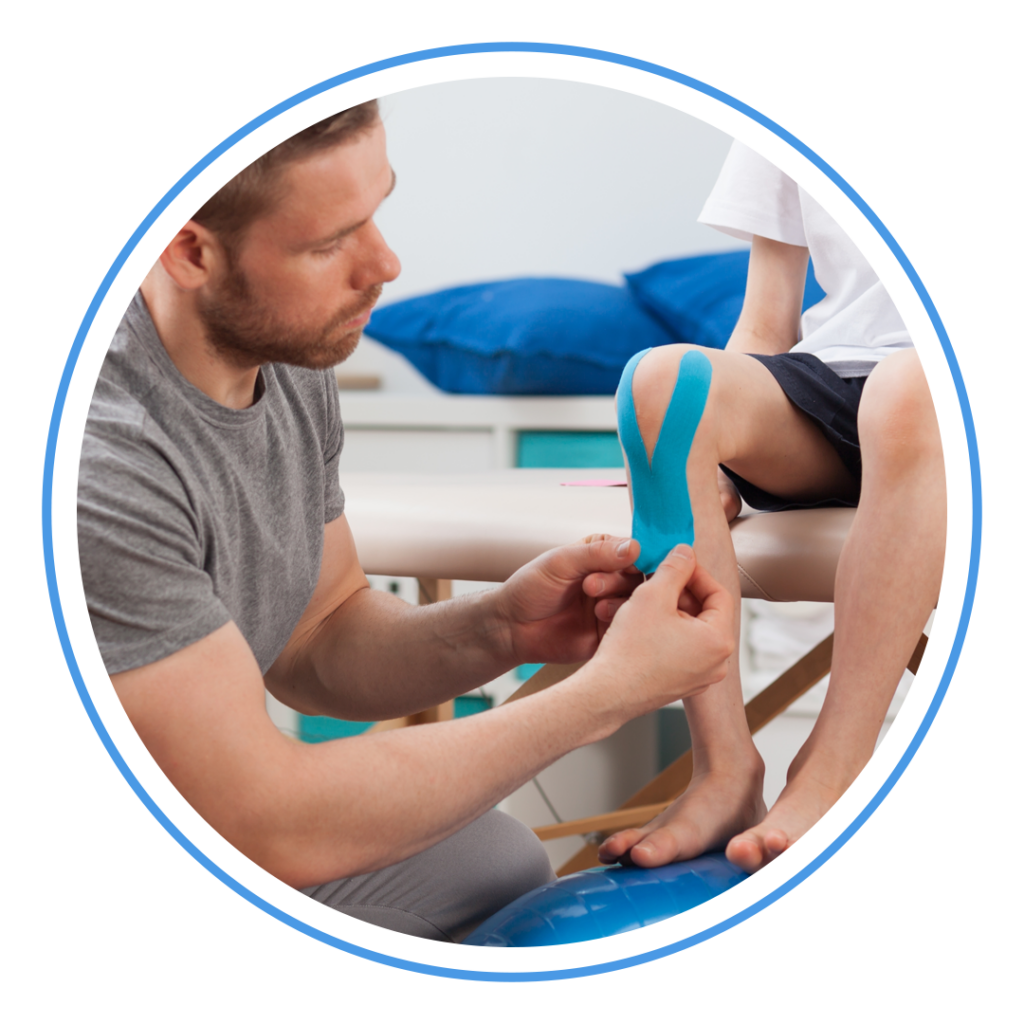
Upper and lower limb joint problems: ankle, knee, hip, shoulder, etc are common soft tissue problems associated with sports injuries, wear and tear, falls, etc. Some intervention includes muscle strengthening exercises, joint mobility programs, injury prevention advice, joint support and stabilization.
Paediatric musculoskeletal problems include sprains, strains, and other soft tissue injuries associated with physical activities. There are other conditions specifically associated with children like SUFE, Sever’s disease, Osgood Schlatter diseases, low back pain, Scheuermann’s disease, hypermobility Syndrome, anterior knee pain, juvenile arthritis, scoliosis, etc. These problems affecting children require the expertise of a Specialist Paediatric Chartered Physiotherapist.
Taping supports injured soft tissues and joints, allowing them time to heal and recover. Different types of tape allow the active individual to return to sports earlier, minimising the risk of injury.
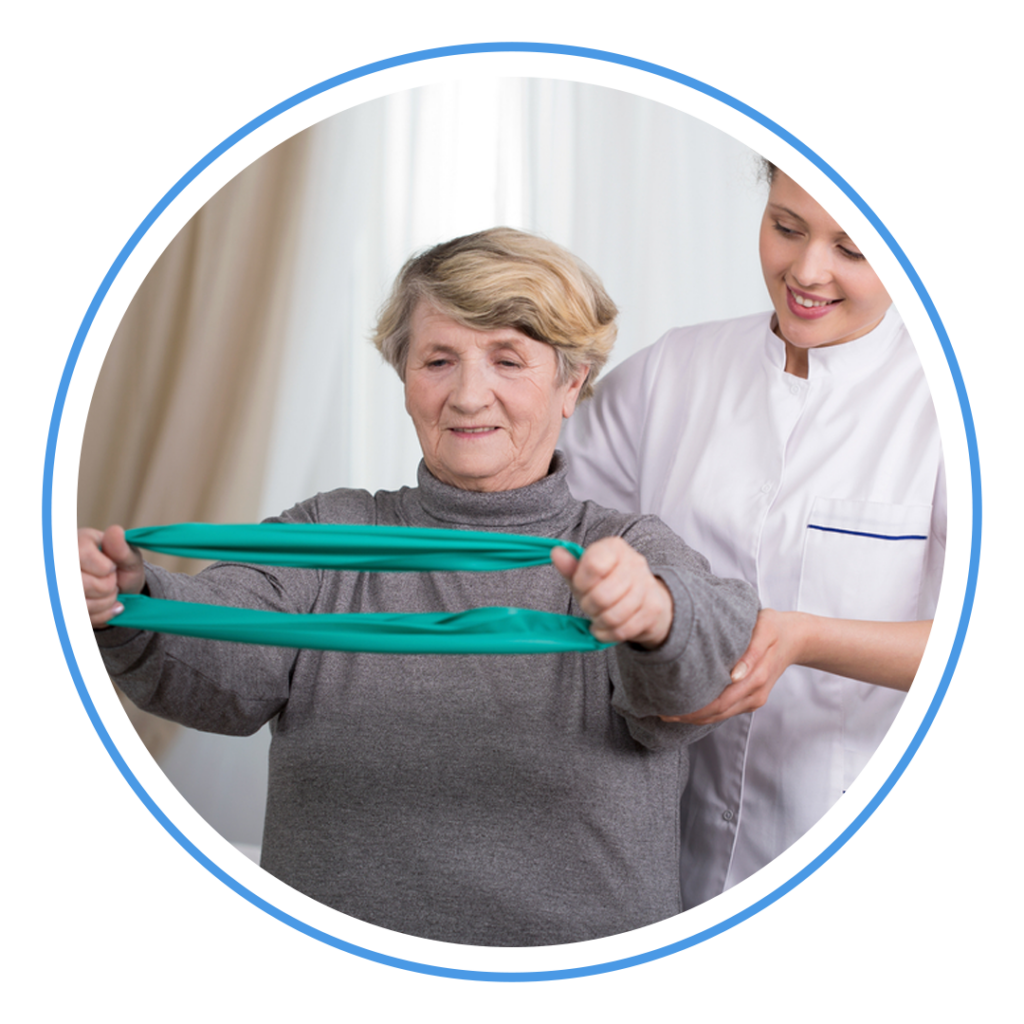
The term degenerative diseases refer to changes in the spine and joint. With age, the discs in the spine and cartilage in the joints that serve as shock absorbers and buffer between the bones dry out and shrink. This narrows the space between vertebrae and the joints, and bone spurs may develop. In some cases, the bone spurs can pinch a nerve root-causing pain, weakness or numbness. Osteoarthritis is the most common degenerative joint disease affecting the spine and the peripheral joints (hips, knees, etc).
Management includes pain reduction, joint protection, maintaining muscle strength and joint range of motion.
Inflammatory joint disease like rheumatoid arthritis affects the smallest joints in the hand and feet. Unlike the degenerative wear and tear, it affects the lining (synovial membrane) of the joints, causing painful swelling that can result in bone erosion and joint deformity. Rheumatoid arthritis is an autoimmune systemic disease that can affect other organs/systems in the body.
Pre and Post-op care for joints’ replacements (hip, knee, etc), ligaments’ repair (anterior cruciate, medial and lateral collateral, etc), Disc and Back operations, arthroscopies, etc provided to enhance recovery, and improve function. Post-operative care not only relieves pain and discomfort, it also enhances your chances of getting back to work, play, and sports close to your pre-injury level.
Neurological rehabilitation for conditions like stroke, multiple sclerosis, Parkinson’s disease, age-related conditions helps to restore function and promote independence.
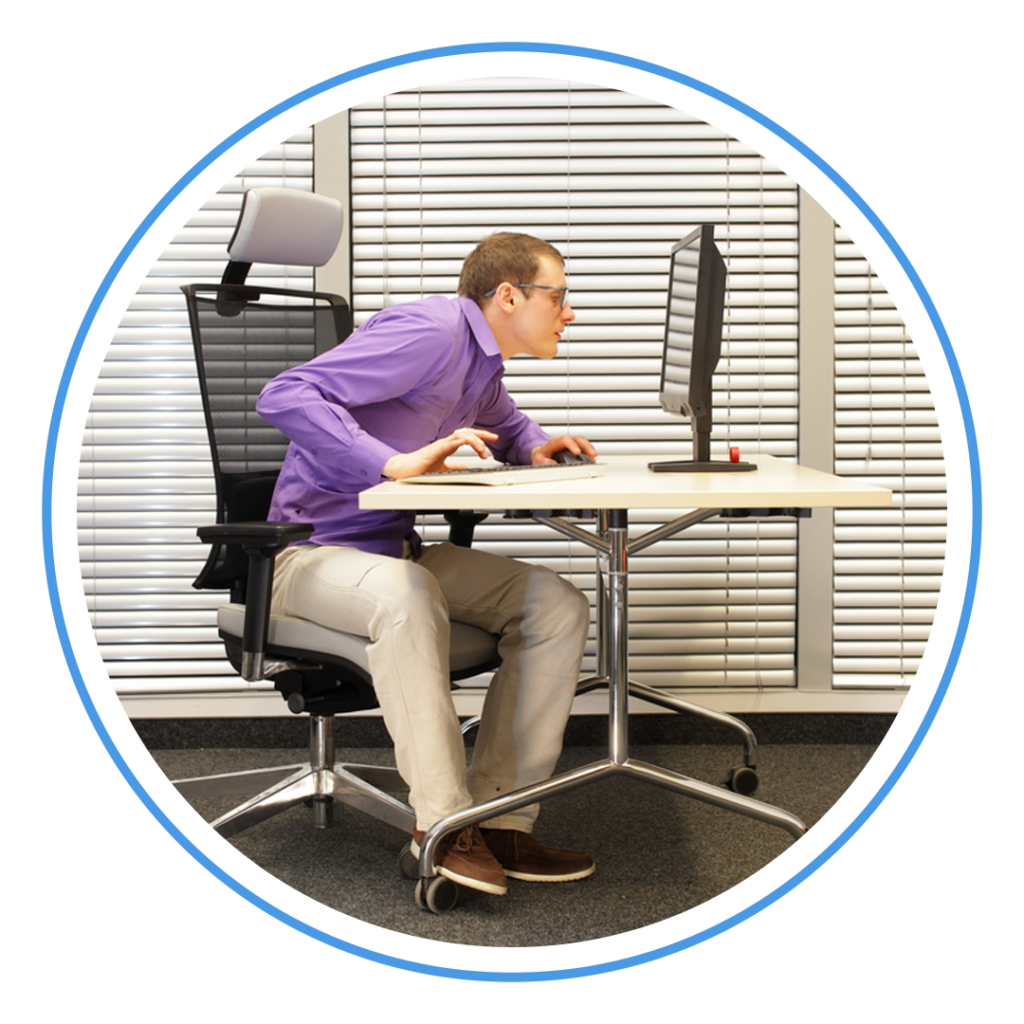
There are multiple causes of neck pain. Neck pain may be due to trauma, poor posture, muscular tension, wear and tear due to the ageing process or an old injury, etc. Neck pain can sometimes be localised or referred to the shoulder, elbow, wrist and the fingers if there is any nerve irritation.
Muscle tension can lead to headaches around the base of the skull (occipital headache). This often leads to pain at the forehead due to the irritation of the nerve. This latter can also be caused by bad posture, muscle tension, viral infection, etc
Ergonomic assessment is workplace assessment. It is all about making your workplace suitable for you (and not making you suitable to your workplace)
It covers the following elements:
- Visual Display Unit Assessment
- Workstation assessment
- Risk Assessment and analysis
- Hazard Identification
- Injury Likelihood Assessment and reduction in the workplace
- Workplace and Industry specific assessment
- Back Care Program in the workplace
- Return to work assessment
- Manual Handling Training
Ergonomically suitable workplace is a conducive environment with low absenteeism rate, low staff turnover, high productivity, and reduced sick days.
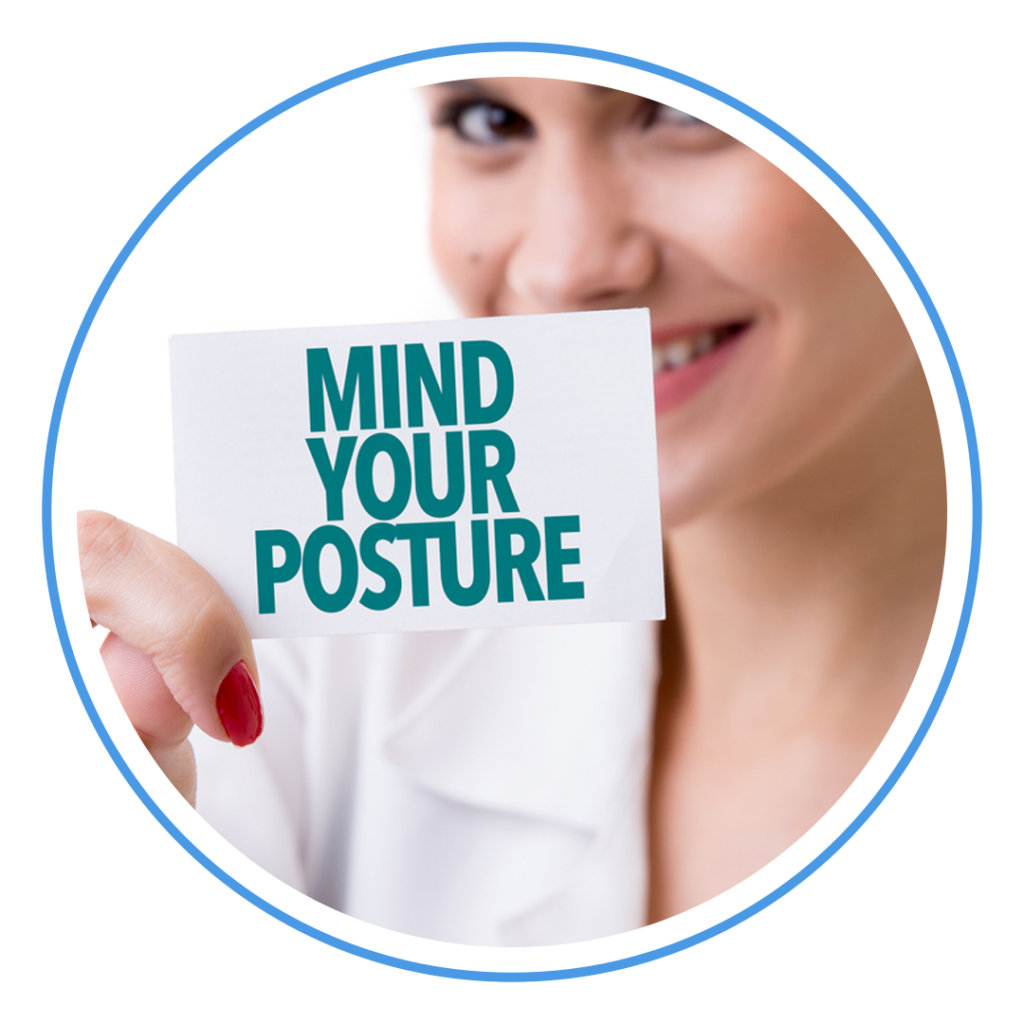
This may be congenital (from birth) or acquired. Common postural problems of the spine are secondary to poor habits and effect can manifest itself in the upper and lower limbs. Poor postural habits such as the following may lead to postural problems:
- Slouching while sitting (at home, in the office, or in school)
- Prolonged sitting (such as working at the computer)
- Clenching the jaw
- Poor workstations and practises
- Poor sleeping positions
Discs are shock absorbers in the spine and frequently damaged over time due to advancing age, old injury, poor posture, and wear and tear. Herniated disc can compress the nerve endings with resulting pain and numbness in one or both legs. Healthy lifestyle, strong spinal muscles, and a good posture prevent back and disc problems.
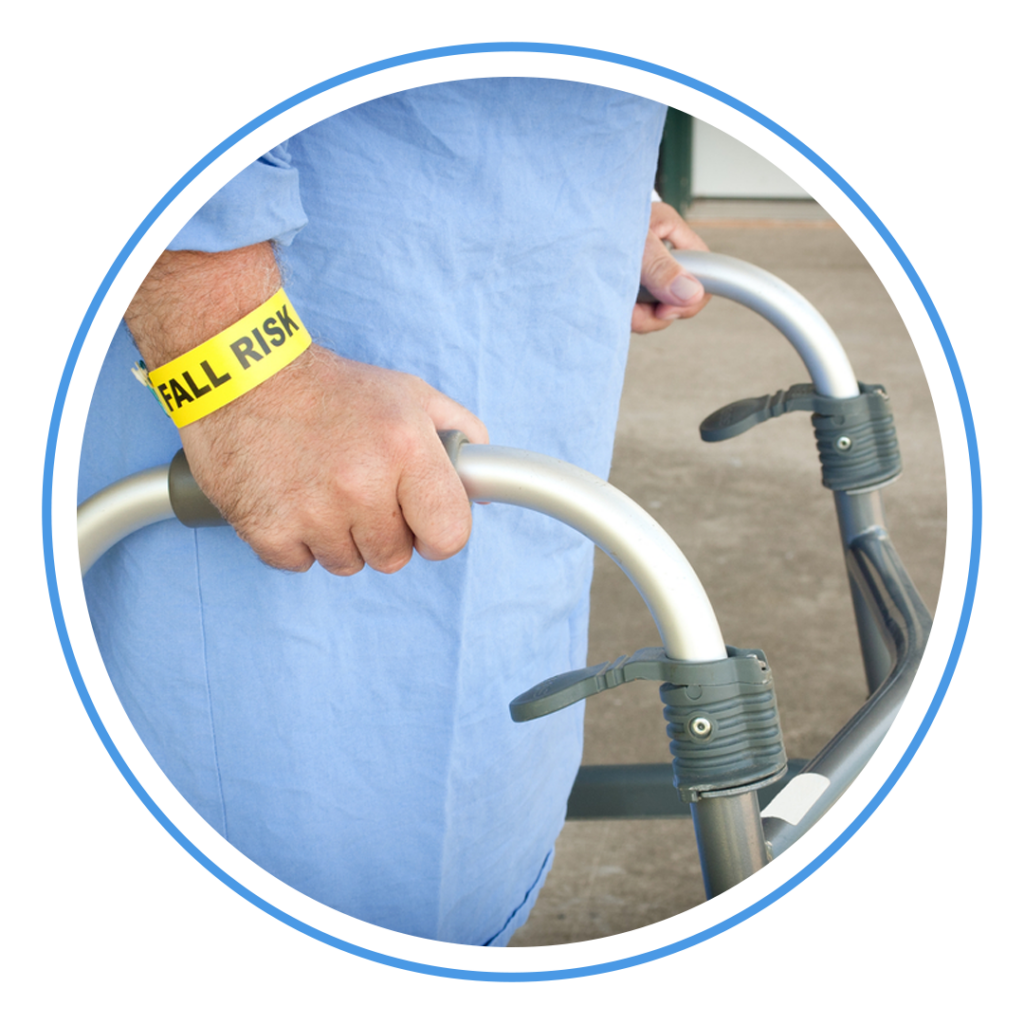
Poor balance and mobility constitute one of the major causes of falls in patients. Decrease in balance and impaired mobility can be due to:
- Musculoskeletal problems
- Neurological conditions
- Visual impairment
- Other unresolved health problems
- Inappropriate Footwear
- Defective or inappropriate walking aid, etc.
Assessment identifies possible cause(s) with a view to improving patients’ balance and mobility through specific exercises and rehabilitation of the underlying problems.
Foot Orthoses are supportive medical devices used by patients of all age groups for following reasons:
- Injury prevention
- Treating foot problems : flat feet, high arch, shin splint, heel pain, halux limitus, metatarsalgia (ball of foot pain), Achilles tendonitis, etc
- Treating biomechanical Pain : joints’ pain, back pain, children’s foot and biomechanical pain, limb length discrepancies, Morton’s Neuroma, Arch Strain, etc by modifying forces on the skeletal system
- Improving Function at work, play, and sports
- Preventing complications associated with chronic conditions like Diabetes and vascular problems
Medical footwear may be customised, generic, or modular prescribed for preventing complications associated with chronic diseases like Diabetes, Peripheral Vascular Diseases, and other at-risk feet where there is risk of ulcerations and amputations
Medical Footwear is also prescribed in the following instances:
- Foot deformities (after a medical event like stroke, Multiple Sclerosis, Motor Neurone Disease)
- Foot with toe deformities-hammer toes, mallet toes, bunions, poor sensations, callus, Haglund’s deformity, Heel fissures, Corns, etc
- Severe foot deformities with limb length discrepancy and other changes post-op
- Poor balance secondary to inappropriate footwear
- Foot drop due to nerve endings damage or diabetic neuropathy
- Excessively sensitive feet (with risk of damage using off-the-shelf shoes).
- Foot deformities in children with neurological problems like Down’s syndrome, Cerebral Palsy, Autism, etc

Foot deformities as the name implies affect predominantly your foot. Unfortunately, the effects of foot deformities manifest all over the body. If your foot hurts, your whole body hurts. Some of the foot deformities commonly seen with its secondary effects are as follows:
- Pes Planus (Flat Feet)
- Pes Cavus (High Arch)
- Heel Pain (PlantarFasciitis)
- Arch Strain
- Tibialis Posterior Syndrome
- Tenosynovitis
- Morton’s Neuroma
- Freiberg’s Disease
- Achilles Tendinopathy
- Patellofemoral Syndrome
- Halux Limitus and Rigidus (stiff big toe), etc
These foot deformities may cause pain in the knee, hip, and ankle joints, poor posture, shin splints, back pain, tight muscles, and painful tensor fascia.
This is a routine clinical assessment that is a MUST for all diabetics, patients with peripheral vascular diseases, and other patients with compromised foot sensation.
It covers:
- Approriate footwear
- Self Management and foot self-care
- Foothealth screening
- Health information/education on foot hygiene, ulcerations, amputation, neuropathy, etc
- Disease Management and physical activity
Women’s health issues like incontinence, rectus diastases, pregnancy-related back/pelvic/sacro-iliac joint pain, weak abdominal muscles, etc are some conditions seen and treated by Physiotherapists with expertise in women’s health Many of these conditions are annoying and embarrassing for the sufferers to discuss with their healthcare professionals at times. This makes it imperative to not only treat the patient’s condition, but patient’s care is holistic incorporating the emotional and psychological well being of the individual using the necessary modalities, advice and self help tips, and exercises.
Neurological rehabilitation for conditions like stroke, multiple sclerosis, Parkinson’s disease, age-related conditions helps to restore function and promote independence.
Injury Rehabilitation after sport tissue injuries is essential for the following reasons:
- Reduce risk of injuries
- Prevent chronic injuries
- Prevent scar tissue build up
- Enhance proper healing
- Confidence building for the active person
- Self Management (exercise, etc)
After every injury, certain amount of deconditioning takes place. Physical conditioning is focusing on returning individuals back to their pre-injury level. For those who have not been active and planning to take on physical activities, it is about advising and teaching them progressive physical training.
We provide medical reports for your insurance companies following an episode of care.
We provide supporting services-Occupational Therapy Services, Speech and Language Therapy, Etc through other members of the Multidisciplinary Team.

Peslocus Physio is recognized by most health insurance companies.
FEES
Our fees are dependent on your location, healthcare needs, and treatment time.
1. INITIAL ASSESSMENT (UP TO 60 MINUTES)
This covers the first-time assessment, treatment, and discussion of our management plan with you.
2. FOLLOW-UP SESSIONS (UP TO 40 MINUTES
This covers the follow-up treatment after the initial assessment.
3. OUR BIOMECHANICAL ASSESSMENT AND GAIT ANALYSIS (UP TO 60 MINUTES)
This is charged at a different rate. This involves the use of the 2D scanner, gait, and postural analysis and treatment.
We travel to addresses 20-mile radius of our postcode with no travel charge. Locations outside the 20-mile radius will incur an extra travel charge of 0.7p/mile.
We provide the consumables required, exercise programs, and reports (where relevant) for the initial, follow-up, and biomechanical sessions.
DISCOUNTS
We offer discounts to facilitate your access to our services-
1. 5% DISCOUNTS FOR INITIAL ASSESSMENTS BOOKED WITHIN 24 HOURS OF INITIAL ENQUIRY
2. 10% DISCOUNTS FOR GROUP BOOKING OF 7 SESSIONS CONFIRMED AND PAID FOR AT THE TIME OF INITIAL ASSESSMENT
Where You Can Find Us
Our coverage includes but is not limited to the following Areas:
All of County Essex; East of London (Havering, Romford, Borough of Barking and Dagenham, etc);
South Cambridgeshire (Ida Darwin, Royston, Teversham, etc);
Parts of Suffolk County (Ipswich, Haverhill, etc);
East Hertfordshire (Bishop Stortford, Sawbridgeworth, Chestnut, Waltham Abbey, etc.);
Kent (North and West of the county), etc.
HEALTH INFORMATION
Peslocus Physio A-Z Fitness Tips
-
A - Adopt a healthy lifestyle. Avoid sprains and other injuries as you stay active. Health is Wealth
-
B - Beware of the effects of caffeine and other stimulants on exercise
-
C - Create your active action plan
-
D - Don’t overstretch and bounce while stretching
-
E - Exercise helps your bone health
-
F - Fitness programs need not cost money. Incorporate homemade exercise programs
-
G - Get ready to change. Don’t let excuses stop you from exercising. The body achieves what the mind believes
-
H - Healthy Eating essentials for good health
-
I - Inappropriate exercise gears predispose you to injury. Don’t grab what is just handy and don’t choose the right shoes for the wrong activity
-
J - Join a group. Make your exercise a social event walking/running with a group
-
K - Keep track of your progress or lack of it
-
L - Lactic Acidosis occurs during vigorous exercises. Rehydrate with lots of water and rest in between activities
-
M - Maintain the right weight for your height
-
N - No age limits to exercise. If in doubt, ask your healthcare practitioner
-
O - Overhaul your health and fitness level by turning sit time into fit time. Start slow, progress it, and start a new activity once you plateau
-
P - Progress your physical workout at your pace
-
Q - Quit Smoking and Stop Procrastinating
-
R - Reduce Sedentary Behaviours: Sitting Less and moving more
-
S - Sleep Well
-
T - Take your exercise serious. Exercise is Medicine!
-
U - Use Dynamic stretching as a warm-up for exercise
-
V - Value your time and exercise creatively. Encourage less screen time to combat the excuse of lack of time. Log out, shut down, and go for a walk or run
-
W - Walking lowers your stress level, lifts your mood, and reduces the risk of depression
-
X - Xtra help counts. Use technology: calorie counter, fitness apps, fitness log, etc. Run happy, run grumpy; run speedy, run slow; run a little, Run a lot; Just Run!
-
Y - Your strength training can be made effective and safe if properly designed
-
Z - Zero your mind on getting active and fit by being an early riser, employing the buddy system, making exercise a priority, rewarding yourself, and admitting no one is perfect when having a bad day.
FAQ's
How much will this cost me?
- The fee is determined by your location, the nature of conditions, and your requirements. We will discuss and confirm the charges during our phone conversation.
Can you provide information on your session types and durations?
- The initial assessment typically lasts for 60 minutes, while follow-up sessions can take up to 40 minutes. Additionally, our biomechanical assessment is designed to be completed within a maximum duration of 60 minutes.
What guarantees do clients receive from your services?
We prioritize the well-being of our clients and strive for optimal outcomes. While individual results may vary, our commitment is to provide personalized care, tailored treatment plans, and dedicated support to enhance your overall health and well-being.
What is the best way to get in touch with you?
For any inquiries or to reach out, please feel free to use the “Contact Us” button below. We look forward to hearing from you!”
Benefits of Home-Based Physiotherapy
-
It promotes faster recovery and enhances healing
-
It is environmentally suited
-
It is family and social-support-friendly
-
It promotes autonomy and independent living
-
Improves functional outcome
-
Valuable alternative in providing access to healthcare
-
Facilitates greater patients' involvement and control
-
Reduces hospital admission and length of stay, and the likelihood of going back to the hospital
-
It is convenient and comfortable
-
It helps to harness the physical and psycho-emotional aspects of the home environment
-
It eliminates environmental stresses associated with hospitals and healthcare settings
-
Home treatment is personalized care and tailor-made
-
It is focused and at the appropriate intensity
-
It is cost-efficient
-
Home-based treatment improves quality of life—it adds years to life and life to years
-
It reduces the risk of Hospital Acquired Infection (HAI)
